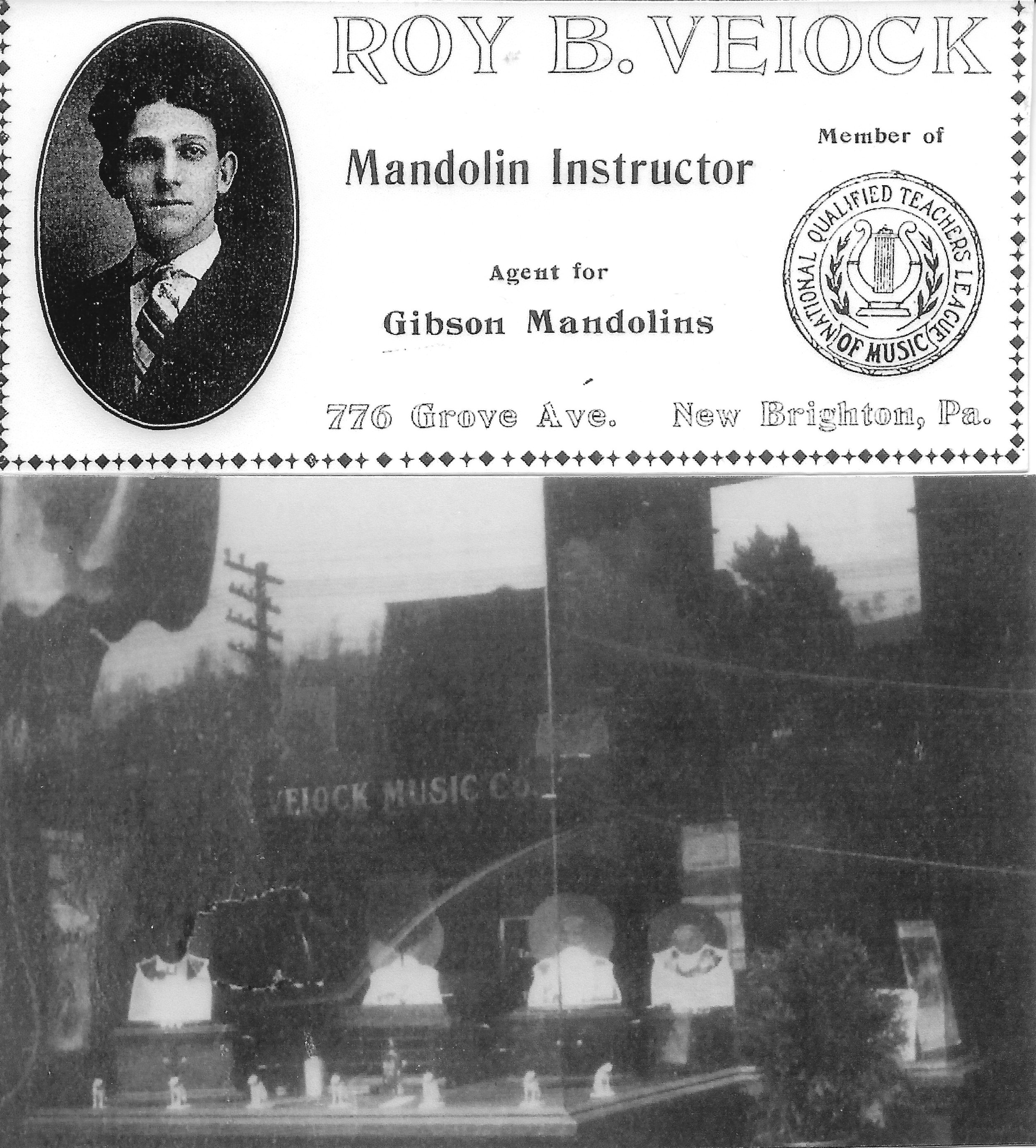The 1923 Edition of the Gibsonian Concert Orchestra. L to R: Ethyle Hindbaugh Johnstone; Charles A. Templeman; James P. Johnstone; Lloyd A. Loar; Margaret Licthi. Not shown: Fisher Shipp (Mrs. Lloyd Loar). Crescendo Vol XVI #2 August 1923.
Crescendo, March 1923.
Advertisement for the Concert on April 12, 1923. Star-Gazette, Elmira, New York, Apr 11, 1923, Page 12
Charles Avril Templeman, multi-instrumentalist, orchestra leader and Gibson artist/teacher/agent, was on the faculty as music teacher and band leader at Morningside College in Sioux City, Iowa. Loar had met Templeman at the Guild Convention in 1922, and on July 26, when Loar and company played in Davenport and Muscatine, Iowa, he took the opportunity to spend time with Templeman. Templeman had organized an orchestra of over thirty members in Sioux City, Iowa, and his quintet, which featured his family members, had achieved local notoriety. Young daughter Hazel, especially, drew considerable attention with her skill on the Lyon & Healy Harp. In 1922, it had been announced that Miss Templeman would add her harp to the Gibsonians in 1923, but this does not seem to have come to pass, at least not for the first tour in April. Loar had also been impressed with another Sioux City musician just out of high school, Marguerite Lichti, with her “kind heart and quiet manner.” Miss Lichti excelled as guitar soloist, and also performed on mandola in the orchestra. James Johnstone, who had founded the Gibsonian Concert Orchestra, was once again on tap for mando-bass. We notice that his 1923 bass no longer had the large position markers of the 1922 instrument, which had presumable been installed to compensate for Johnstone’s poor eyesight. Fisher Shipp again led the group with her gift for entertainment and notoriety as performer. Johnstone’s wife, Ethyle, completed the troop as second mandolinist, moving Lloyd Loar to first mandolin in the ensemble selections.
Star-Gazette, Elmira, New York, Apr 13, 1923 · Page 9
Star-Gazette, Elmira, New York, Apr 13, 1923 · Page 9
In April of 1923, in addition to his role as musical director and performer with the Gibsonian Concert Orchestra, Lloyd Loar was undoubtedly engaged in a shower of activity as acoustic engineer at Gibson Mandolin and Guitar Company, signing off on newly completed F-5 mandolins.
Signature label from F-5 72857.
In March and April of 1923, there was a curious phenomenon from Loar’s pen. Typically, on a given signing date, a number of mandolins from within a batch or batches were launched with the distinctive signature. One signature date (March 31, 1924) yielded over 60 instruments! From what we can discern from mandolins currently known, there appears to be a number of single instruments in the spring of 1923: in March, 72361 on the 8th; 72450 on the 16th; 72615 on the 27; in April, 72663 on the 2nd; 72799 on the 10th. On April 12, there was a small batch, with numbers ranging from 72853 to 72859, inclusive.
To make those signature dates, which we assume took place at the Gibson factory in Kalamazoo, Loar must have spent a bit of time back and forth on the train, as his concert schedule, which was a key element in marketing the instruments, was also taking off. Loar’s performances for 1923 had actually begun on March 7, most likely before the Gibsonians had begun rehearsal.
Lansing State Journal, Lansing, Michigan, March 7, 1923,
Between this concert on March 7 and the first of April, Charles Templeman and Margret Licthi made their way from Sioux City to Kalamazoo to begin rehearsals. The first show with the entire group took place at the Lincoln Theater in Kalamazoo on April 6. Mrs. Edna Dole Wilcox, who had toured with the Gibsonians in 1921, attended the show with a number of her students and reviewed the performance with enthusiastic accolades in the Battle Creek Enquirer. On April 7, the troop made their way to Cleveland, Ohio, where Loar’s friend and virtuoso/teacher/orchestra leader Walla Zeller had organized a venue to host them. Similarly, Roy Veiock of New Brighton, Pennsylvania, hosted the Gibsonians at Veiock Music. Did Loar bring the gorgeous F-5 #72211? Was it then that Veiock first saw it?
Gibson F-5 72211, signed by Lloyd Loar on February 26, 1923.
Roy Veiock’s business card and a photograph of his music store in New Brighton, Pennsylvania, as it appeared in the 1920s. Mr. Veiock hosted the Gibsonian Concert Orchestra here in April of 1923 and may have arranged the purchase of his mandolin at that time.
Crescendo, May, 1923. Jenkins Music, which did indeed host the 1922 Gibsonians, was located in Kansas City. We have not located a Jenkins Music in N.Y. in 1923. Similarly, we have also been unable to identify the F.A.Jenkins at this time.
Stock certificate issued to Lloyd Loar on April 3, 1923.
Cadenza, April, 1923.
The Gibsonians were scheduled to attend the American Guild Convention April 22-25, and Gibson had signed up to display at the exhibit hall during those days. Those who study Gibson serial numbers and signature dates realize that April 25, 1923, is an important date. How could Lloyd Loar be in two places at once? Stay tuned for our next essential episode, “A Capitol Idea!”











